Richard J. Hoffman (1912-1989) was a fine press printer and taught print and design at California State University, Los Angeles. His interests in typography, miniature books and the alphabet are represented by two works in the Books On Books Collection: “Don’t Nobody Care about Zeds” (1987) and Otto Ege’s The Story of the Alphabet (1988).
Both books scratch the collection’s “alphabet itch”. The first provides the added satisfaction of complementing the children’s books that champion the alphabet’s last letter: Jon Agee’s Z Goes Home (2006), Alethea Kontis & Bob Kolar’s AlphaOops: The Day Z Went First (2012), Sean Lamb & Mike Perry’s Z Goes First (2018) and Lou Kuenzler & Julia Woolf’s Not Yet Zebra! . The second adds an alphabet history to the miniature abecedaries as well as a more than usually intricate design.
“Don’t Nobody Care about Zeds” (1987)
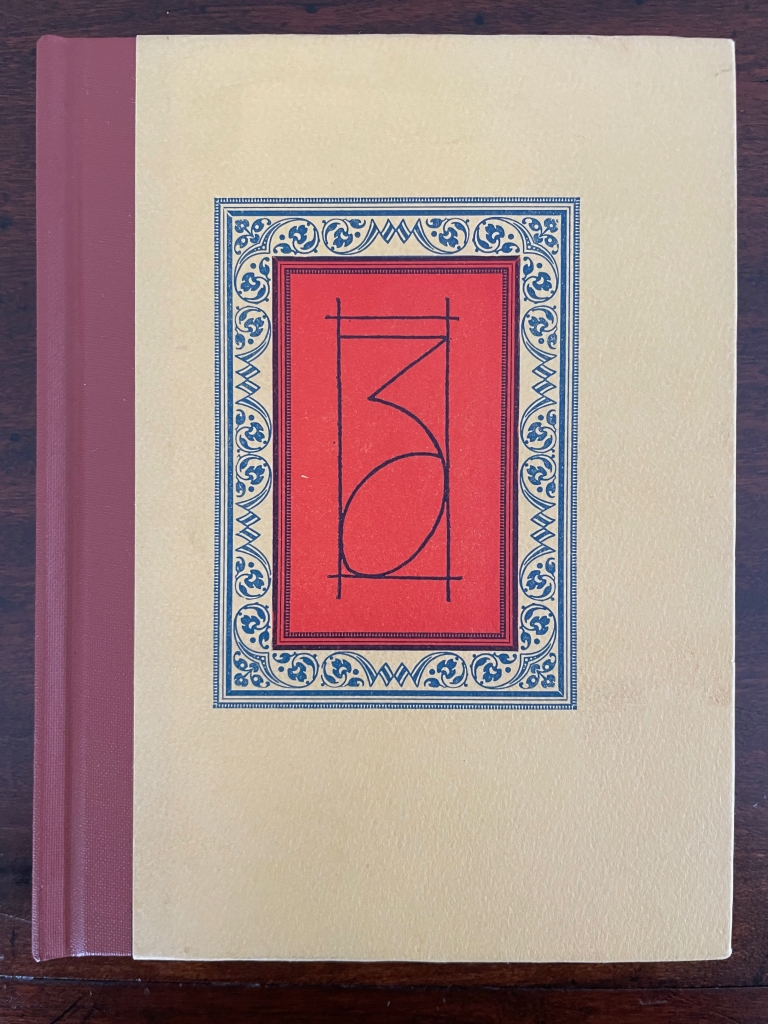
“Don’t Nobody Care about Zeds”
A Modest Book About an Oft-overlooked Character of the Alphabet Prepared for the Pleasure of Zamoranans* (1987)
Richard J. Hoffman
Hardcover, casebound. Cloth and paper cover with colored endbands and printed doublures. H160 x W120 mm. 176 pages. Edition of 200. Acquired from Scott Emerson Books, 5 September 2023.
Photos: Books On Books Collection.
Hoffman’s introduction, which explains the book’s title and final image, also touches the collection’s expatriate funny bone.
‘Zeds is what the English folk call the magnificent twenty-sixth character of our alphabet. This I learned while shopping at Covent Gardens in London some years ago. There I happened upon a flea market where from a pair of old wood type cases, an ‘uckster was peddling electrotyped initial letters. With a blob of sealing wax, he assured me, I could personalize my correspondence by stamping my initial in the soft wax. When I asked he had any Zs, he looked at me questioningly, then he beamed as I picked one up, very brightly responded that he still had some unsold, and then solemnly observed, “Don’t nobody care about Zeds.”‘

For those who consider the ampersand to be the alphabet’s twenty-seventh character, Hoffman’s book may remind them of Jan Tschichold’s A Brief History of the Ampersand (1957) or ~Zeug/Velvetyne Type Foundry’s Et & ampersands : une récolte internationale = a contemporary collection (2017), but those two come nowhere near Hoffman’s embellishments with fleurons and ornaments to highlight his extended sampler.
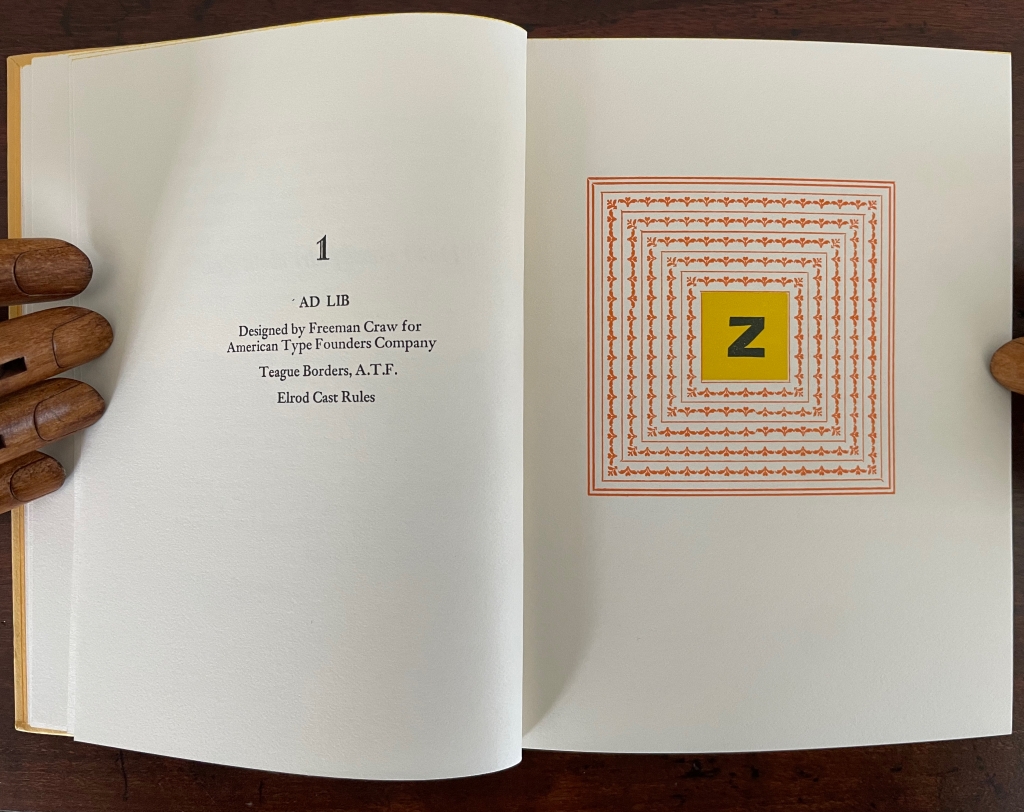
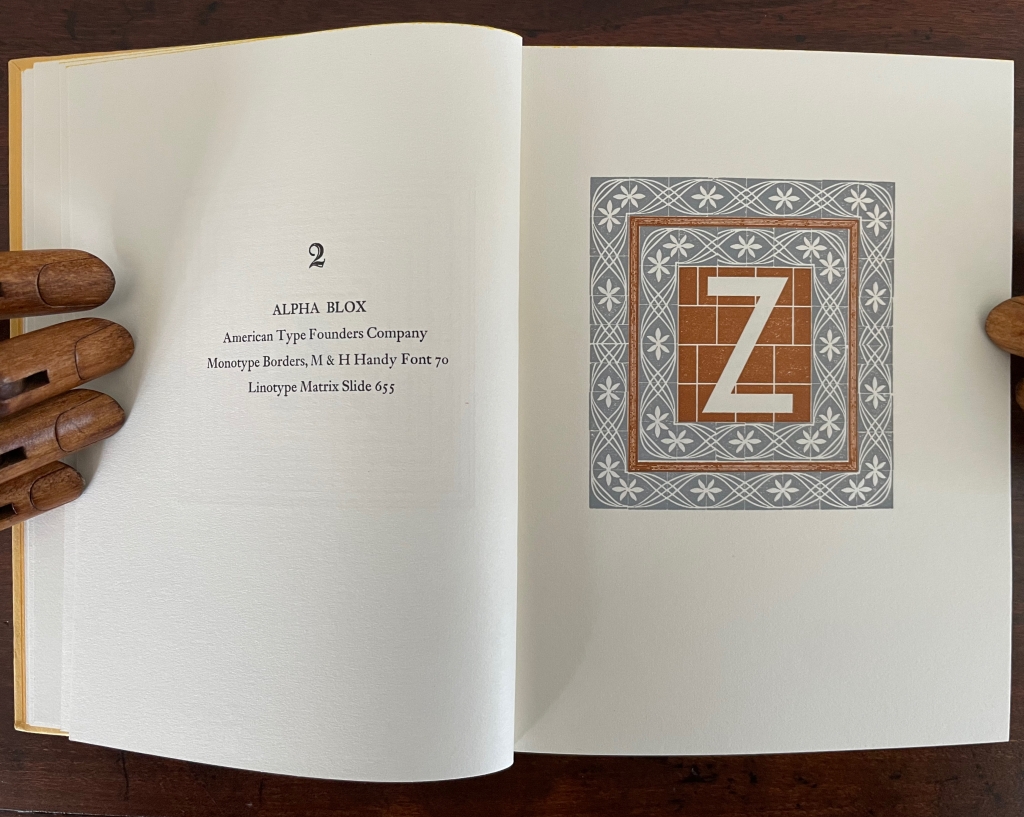
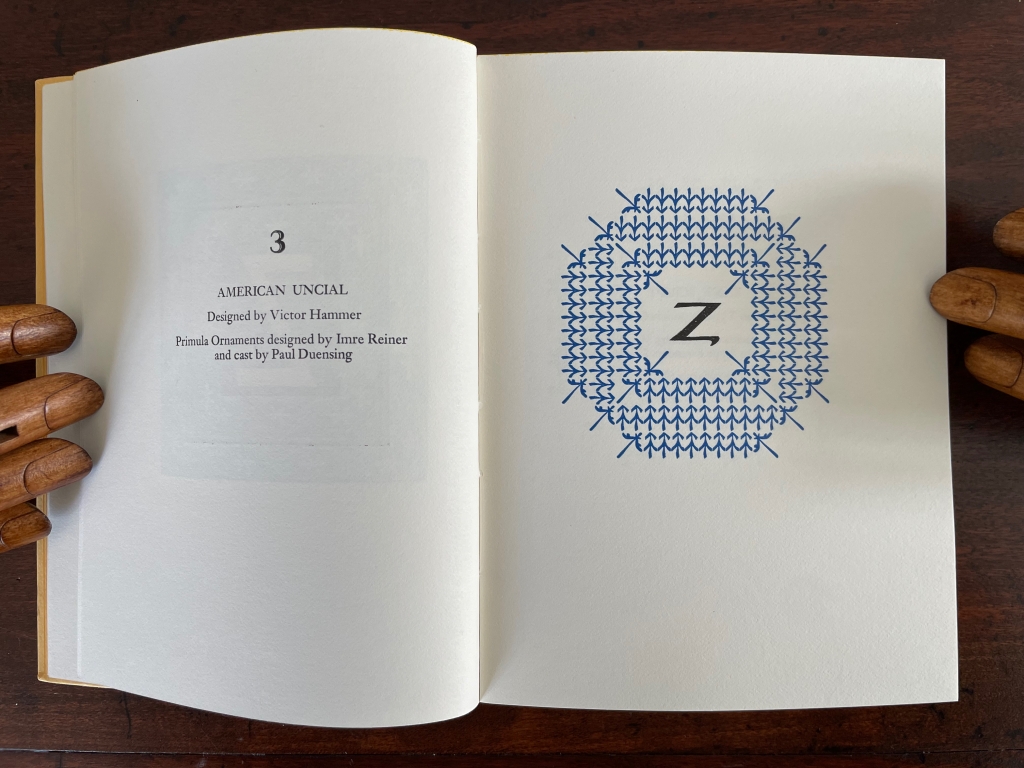
The Story of the Alphabet (1988)

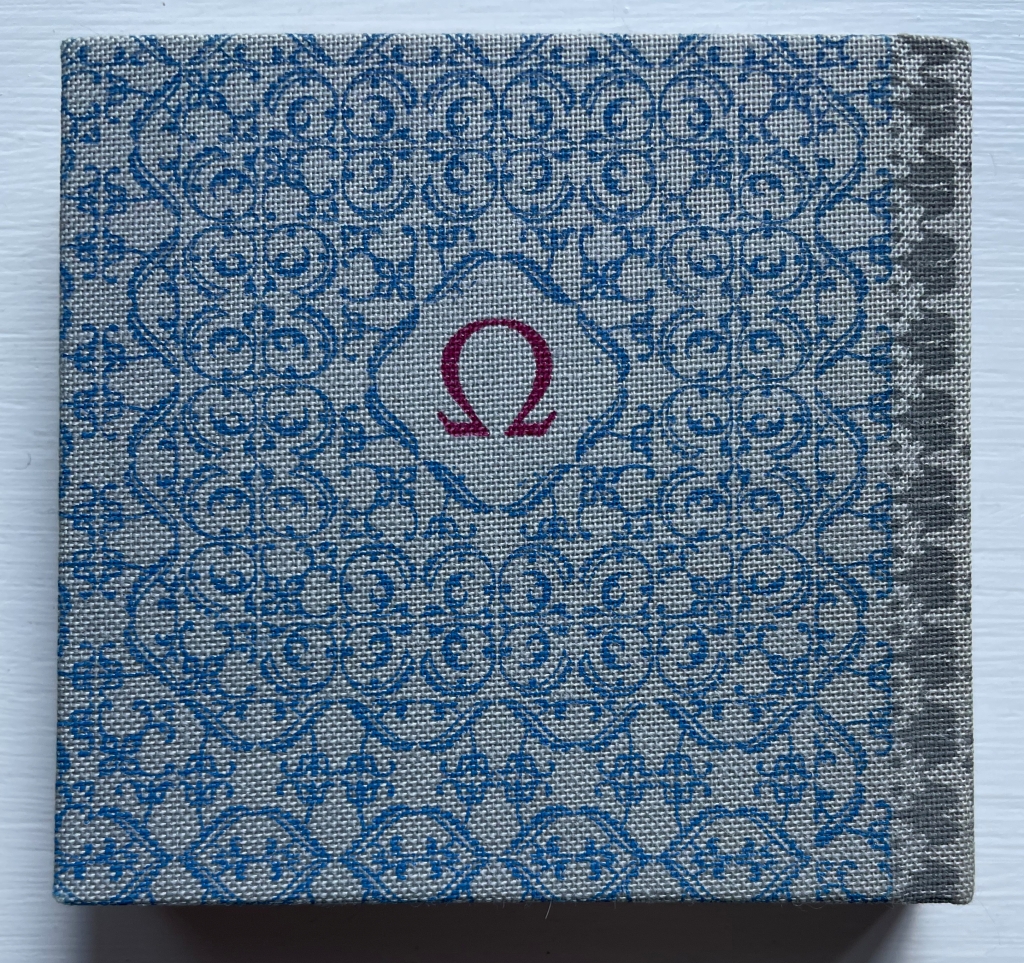
The Story of the Alphabet
Its Evolution and Development… Embellished Typographically with Printer’s Flowers Arranged by Richard J. Hoffman (1988)
Otto F. Ege** and Richard J. Hoffman
Hardback, casebound in gray cloth over boards, endbands, printed doublures. H70 x W74 mm. 82 pages. Edition of 250. Acquired from Bromer Booksellers, 1 November 2023.
Photos: Books On Books Collection.
Color and embellishment in Hoffman’s The Story of the Alphabet perform an informative as well as decorative function. The cover cloth’s red, green, gray and blue are decoratively echoed on the title page and later are used in the color-organization of fleurons and ornaments described in the “Printer’s Note”. Little wonder that the book received a Distinguished Book Award from the Miniature Book Society in 1988.
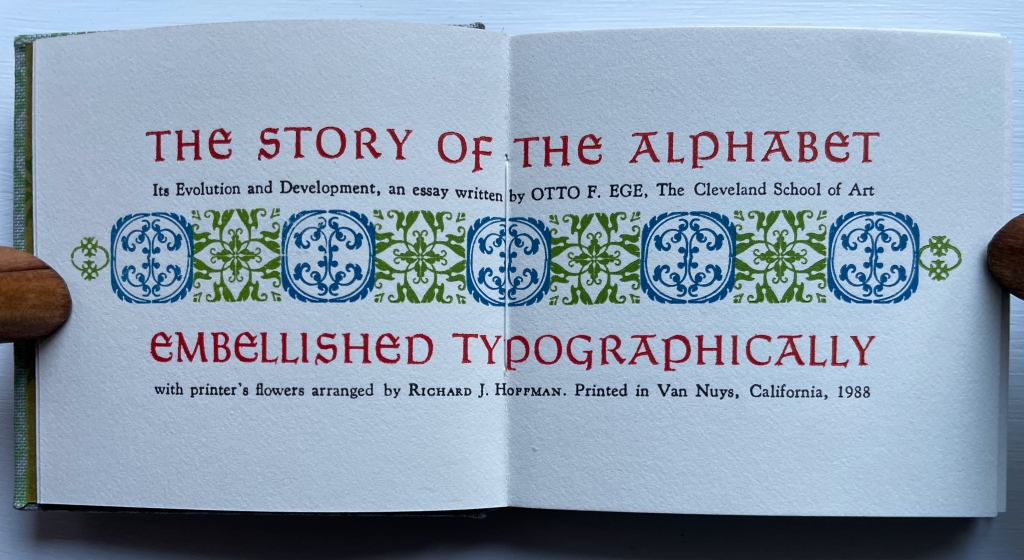
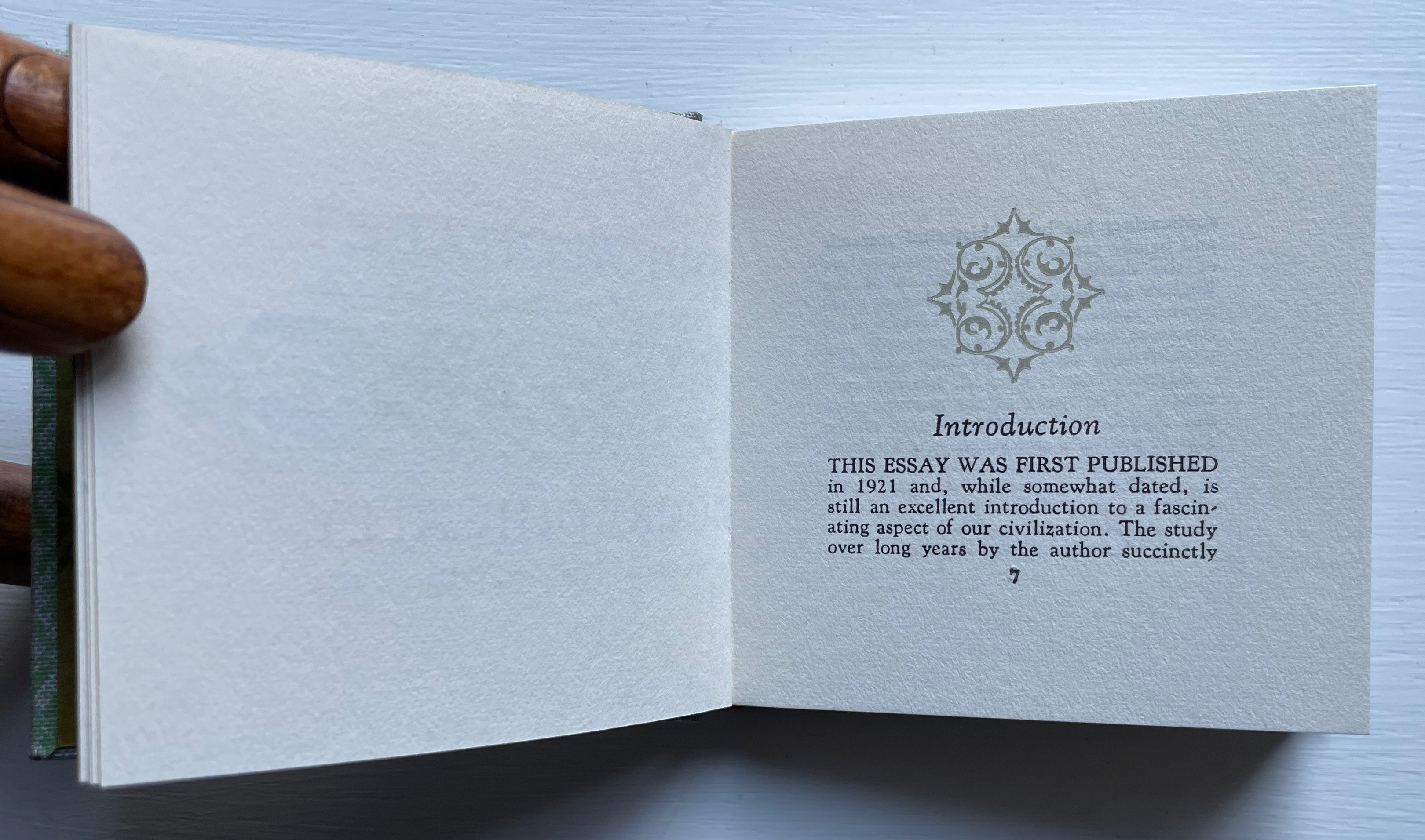

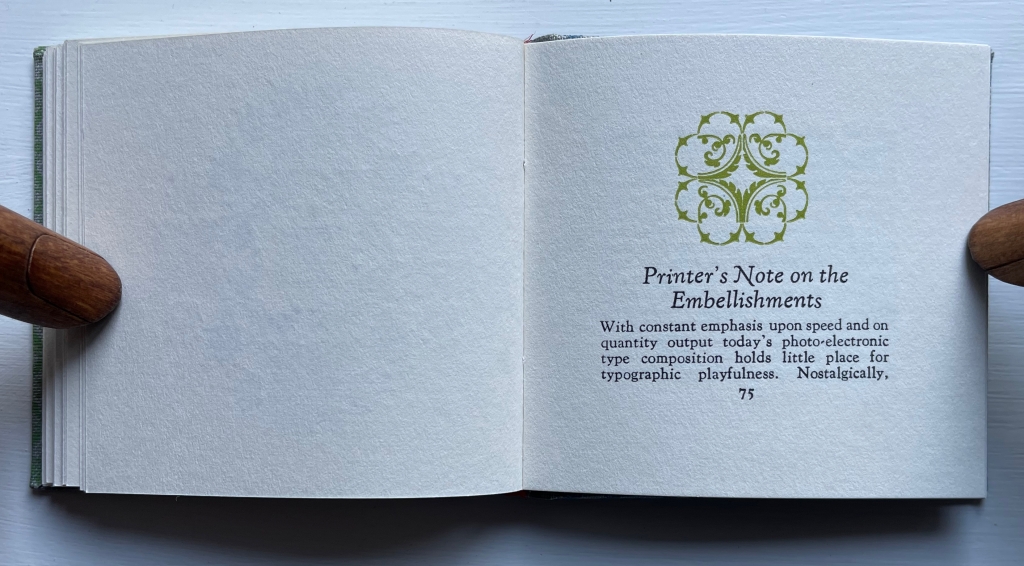
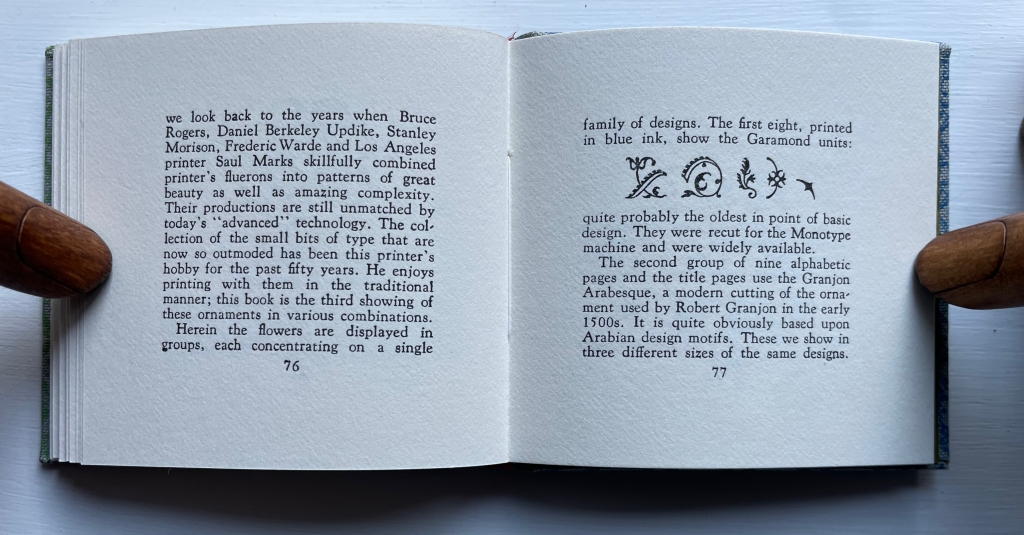
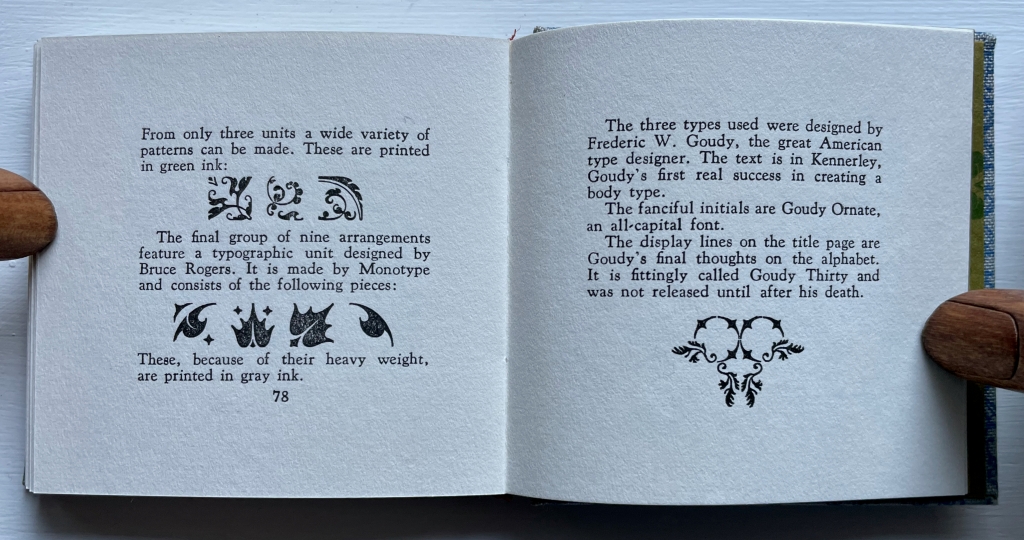
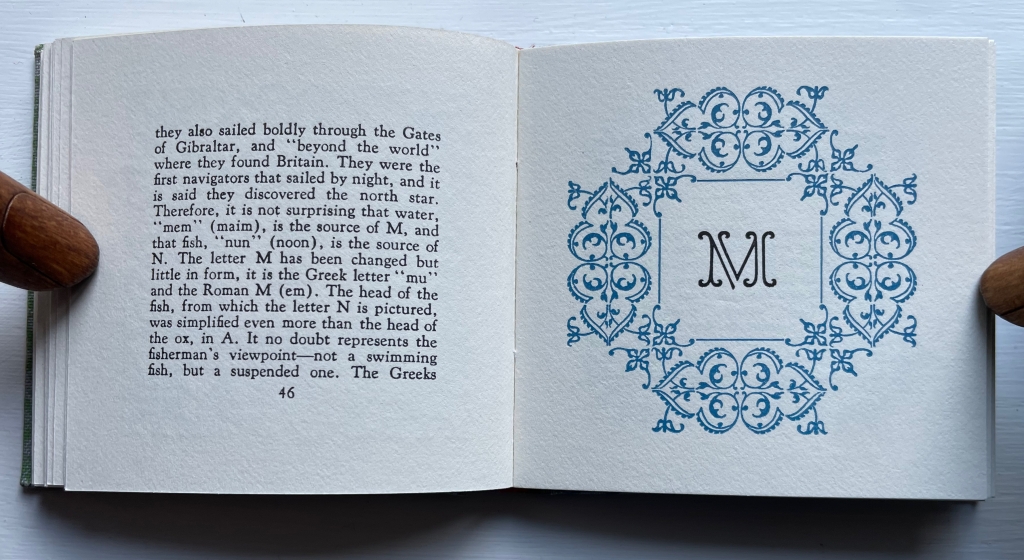
“The first eight, printed in blue ink, show the Garamond units”
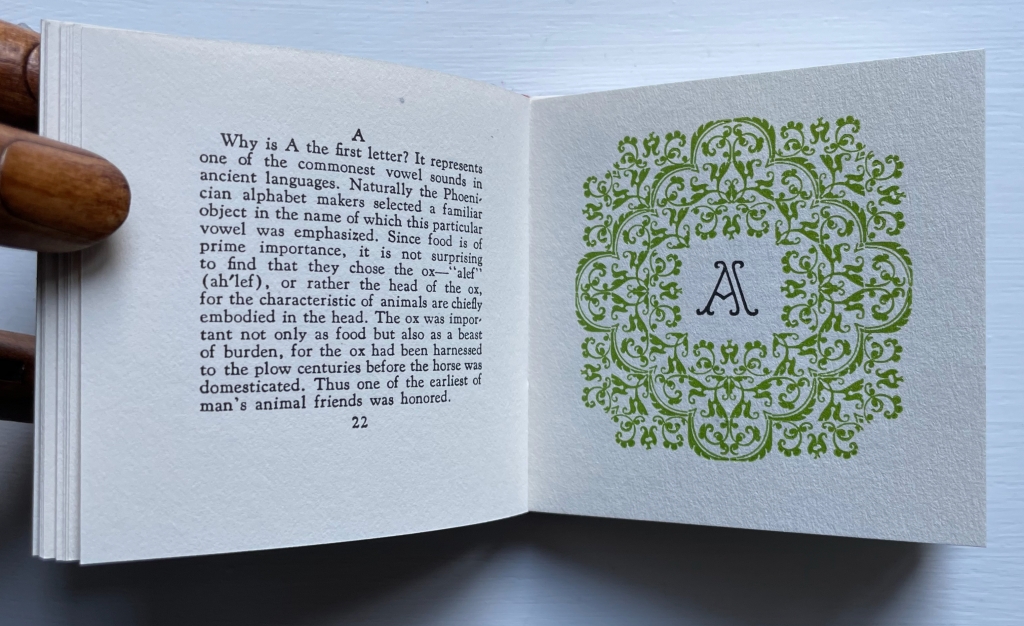
“The second group … use[s] the Granjon Arabesque …. These are printed in green ink.”

“The final group … feature[s] a typographic unit designed by Bruce Rogers…. These, because of their heavy weight, are printed in gray ink….”
*”Zamoranans” refer to the members of the Zamorano Club of Los Angeles, named after Augustin Zamorano, who brought the first printing press to California in 1834.
**”Otto F. Ege” serves another purpose for the collection. Without the artistic justification atributable to some book artists, Ege was a notorious biblioclast. Thinking to make them more widely available, he broke apart numerous illuminated manuscripts to create portfolios of samples. Fortunately he was not comprehensive in his efforts, and a large number of intact works made it into Yale’s Beinecke Library (see below).
Further Reading
“Abecedaries I (in progress)“. Books On Books Collection.
“Jon Agee, Alethea Kontis & Bob Kolar, Sean Lamb & Mike Perry, Lou Kuenzler & Julia Woolf“. 16 October 2021. Books On Books Collection.
“Alphabets Alive! “. 19 July 2023 – 21 January 2024. Bodleian Libraries, Oxford.
“Lyn Davies“. 7 August 2022. Books On Books Collection.
Beinecke Library. 11 November 2015. “Beinecke Library acquires ‘treasure trove’ of medieval manuscripts from Otto Ege“. New Haven, CT: Yale University.
Ege, Otto F. 1921. The story of the alphabet. Baltimore: N.T.A. Munder & Co.
Howell, John. 21 March 2016. “Richard Hoffman: Prolific & Pioneering Printer“. The New Antiquarian: The Blog of the Antiquarian Booksellers’ Association of America.















